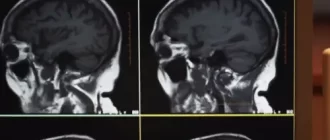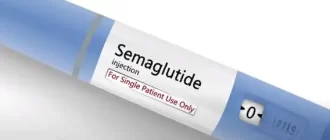As parents, we all want our babies to have a healthy and happy start in life. However, sometimes we may notice that our little ones seem unusually active or restless, displaying symptoms that suggest infant hyperactivity. While it can be alarming to see your baby constantly fidgeting or squirming, it’s important to understand that infant hyperactivity is a real condition that affects many babies worldwide.
In this blog post, we will delve into the symptoms, causes and treatments of infant hyperactivity, allowing you to gain an understanding of the condition and how best to care for your little one.
What is ADHD?
ADHD, or Attention Deficit Hyperactivity Disorder, is a neurodevelopmental condition that affects both children and adults. It is characterized by a persistent pattern of inattention, hyperactivity and impulsivity that interferes with daily activities and relationships. ADHD symptoms include difficulty sustaining attention, forgetfulness, restlessness, fidgeting, interrupting others, and engaging in risk-taking behaviors. ADHD is commonly diagnosed in childhood, but it can persist into adulthood and cause significant impairments in social and occupational functioning.
One important thing to note is that ADHD is not caused by poor parenting, lack of discipline or lack of intelligence. It is a clinically recognized condition that can have a significant impact on a person’s quality of life if left untreated. While the exact cause of ADHD is not fully known, it is believed to be a combination of genetic, environmental and neurological factors. However, with early diagnosis and appropriate treatment, individuals with ADHD can lead successful and fulfilling lives.
Hyperactivity Symptoms in Infants
Hyperactivity symptoms in infants can be a challenge to detect, but it’s important to be aware of the signs. It’s known that children can display signs of ADHD as early as 2 years old, but they can’t be officially diagnosed until age 4 or later. Since infants cannot yet talk, parents should be on the lookout for the following symptoms:
- Excessive squirming, kicking, or flailing.
- Fidgeting or not being able to sit still during reading time or meals.
- Difficulty calming down, even when fatigued or tired.
- Constant movement or restlessness, even during nap times.
These symptoms are not necessarily an indication of ADHD, but they’re good indicators to be on the lookout for. Infants may not develop these traits into the full-blown disorder later in life.
The key to understanding symptoms of hyperactivity in infants is to observe their behavior patterns over time. If you suspect your infant may be suffering from ADHD, it’s important to document their behavior, noting the time of day and the duration of their hyperactivity instances. By paying close attention and keeping a log, you can provide a more accurate report to healthcare professionals.
Diagnosis of ADHD in Children
To properly diagnose ADHD in children, healthcare providers typically use a combination of clinical interviews, symptom checklists, and behavioral observations. As mentioned earlier, the symptoms of ADHD may appear as early as infancy, so it is important for parents and caregivers to recognize and report any concerning behaviors to their child’s healthcare provider.
During the diagnostic process, healthcare providers will gather information from multiple sources, including parents, teachers, and other caregivers who spend significant time with the child. This may involve completing questionnaires or rating scales that ask about the child’s behavior, as well as discussing the child’s developmental history and any other medical or psychological concerns.
It’s important to note that there is no one definitive test for ADHD, so it may take several appointments and careful observation to reach a diagnosis. Furthermore, other conditions may share similar symptoms with ADHD, so healthcare providers must rule out other potential causes before making a diagnosis.
Once a diagnosis is reached, parents and healthcare providers can work together to develop a treatment plan that meets the child’s individual needs. This may involve medication, behavioral therapies, or a combination of both. Regardless of the specific approach, early intervention and ongoing monitoring are key to ensuring the best outcomes for children with ADHD.
Causes of ADHD in Infants
The exact cause of ADHD in infants is still unknown, however, research suggests that it may involve genetic, environmental, and neurobiological factors. Studies have shown that ADHD tends to run in families. Infants who have a parent or sibling with ADHD are more likely to develop ADHD themselves.
Environmental factors such as exposure to toxins like lead, prenatal difficulties or complications during pregnancy, and premature birth have also been linked to an increased likelihood of developing ADHD in infancy.
Additionally, abnormalities in brain anatomy and function have also been associated with ADHD. Research indicates that areas of the brain responsible for attention and impulse control are less developed or less active in children with ADHD, which may contribute to the disorder.
It is important to note that while these factors may increase the risk of developing ADHD, they do not necessarily cause the disorder. More research is needed to fully understand the complex relationship between genetics, environment, and brain development in relation to ADHD.
Early diagnosis and treatment of ADHD in infants is crucial to help manage symptoms and support healthy development. In the next section, we will explore available treatment options for ADHD.
ADHD and its Impact on Children
Children with ADHD can experience a range of challenges that can have a significant impact on their lives. The symptoms of ADHD, particularly inattention and hyperactivity, can make it difficult for children to focus on tasks and follow directions, which can lead to poor academic performance and trouble in social relationships. Children with ADHD may also struggle with impulsivity, making it challenging to control their emotions and behavior, which can cause conflict with peers and authority figures.
ADHD can also have an impact on a child’s self-esteem and sense of accomplishment. Children with ADHD may feel frustrated and discouraged when they struggle to complete tasks or keep up with their peers. As a result, it’s crucial to provide support and reassurance to children with ADHD to help build their confidence and help them develop strategies for managing their symptoms.
Despite the challenges that come with ADHD, there are effective treatment options available for children with this condition. With proper diagnosis and treatment, children with ADHD can learn to manage their symptoms and thrive academically, socially, and emotionally. It’s essential to work closely with healthcare providers and educators to create a treatment plan tailored to the child’s individual needs and ensure that they receive the support they need to succeed. Early diagnosis and treatment are vital to help children with ADHD reach their full potential and lead fulfilling lives.
Available Treatment Options for ADHD
There are many treatment options available for ADHD, and what works best can depend on the individual child and family. Standard treatments for ADHD in children include medications, behavior therapy, counseling and education services. These treatments can relieve symptoms and improve functioning. For most children, stimulant medications are a safe and effective way to relieve ADHD symptoms. However, effective treatment may also include educational programs, behavioral management, psychological counseling, and family support.
If the ADHD is still having a big impact on the child’s life, it might be time to consider medication. Stimulant medicines can reduce hyperactivity and impulsive behavior while improving attention and focus. However, medication is not always necessary or appropriate for every child with ADHD. Behavioral therapy, such as parent training and social skills training, can also be effective in managing ADHD symptoms.
Importantly, the decision to use medication for ADHD should be made in consultation with a healthcare professional. Treatment decisions should be based on a thorough evaluation of the child’s individual needs and circumstances. Parental involvement is critical in managing ADHD symptoms, and parents should work closely with healthcare professionals to ensure that their child receives the best possible care. With the right treatment, ADHD can be managed, and children can thrive. Early diagnosis and treatment are essential for the best outcomes, so parents are encouraged to seek help if they suspect their child may have ADHD.
Importance of Early Diagnosis and Treatment
Early diagnosis and treatment are crucial in managing ADHD, especially in infants and young children. As discussed earlier, recognizing symptoms of hyperactivity and inattention in infants can help in early intervention and implementation of appropriate treatment options.
Early diagnosis can prevent or limit emotional, academic, and behavioral difficulties in children. Diagnosis of ADHD in children requires a comprehensive evaluation that involves taking a detailed history, screening for behavioral and developmental issues and assessing ADHD symptoms. This evaluation helps in identifying comorbid conditions that may complicate the management of ADHD. Early diagnosis also helps in selecting appropriate interventions that best meet a child’s needs.
Parents and caregivers must be aware of the importance of early detection and treatment of ADHD. It is equally critical to choose the right treatment options for infants and young children. While medications may be an option, behavior therapy should be the first-line approach to treatment, mainly because medication has associated side effects that could negatively impact the developing brain.
Early diagnosis and treatment also aid in the educational development of infants and children with ADHD. A comprehensive treatment plan that includes counseling, social skills training, and parent training can help children and infants with ADHD cope with the demands of learning and socializing with their peers, which may otherwise be difficult due to their symptoms.
In conclusion, early diagnosis and intervention can significantly improve the outcome of ADHD in infants and young children. Parents, caregivers, and healthcare providers must work together to identify and manage ADHD in infants and children. With appropriate treatment, children with ADHD can learn to manage their symptoms and lead fulfilling lives.









